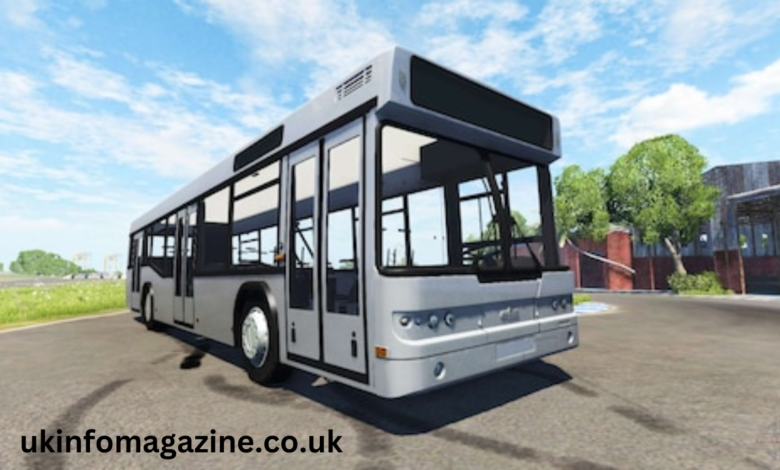Beamng Action Chase bus jump driveshaft break

BeamNG.drive is a sandbox-style physics simulation game celebrated for its stunningly realistic vehicular damage and driving mechanics. The game’s flexible tools allow players to create thrilling cinematic scenes and action-packed sequences that rival blockbuster car chases. One such scenario combines a high-speed chase, a beamng action chase bus jump driveshaft break. In this article, we’ll delve into how to set up, execute, and fine-tune such an exciting scene, providing detailed steps to ensure the action unfolds seamlessly.
Understanding the beamng action chase bus jump driveshaft break
Before diving into the specifics of creating this action scene, it’s essential to understand what makes beamng action chase bus jump driveshaft break a powerful platform for creativity. The game’s soft-body physics engine is designed to simulate realistic deformation and mechanical failures, making every collision, jump, and breakage feel authentic. This realism is a critical factor in setting up a thrilling chase and crash scenario.
Key Features for Action Sequences:
- AI Control: Assign AI drivers to vehicles for dynamic chases.
- Customizable Maps: Use in-game maps or modded terrains to create ideal settings.
- Damage Simulation: Experience vehicle parts breaking, including driveshafts, tires, and more.
- Props and Ramps: Place objects and ramps to add cinematic flair.
Planning the Scene: The Chase, Jump, and Driveshaft Break
The essence of this scene lies in its three main components:
- A high-octane chase involving the bus and pursuing vehicles.
- A dramatic bus jump over a ramp or obstacle.
- The driveshaft break, signaling catastrophic mechanical failure.
Each of these elements requires careful planning and execution to achieve a visually satisfying and engaging sequence.
Step 1: Setting Up the Map
The choice of map plays a pivotal role in shaping the action. Look for a map with long stretches of road, elevation changes, and open spaces for ramps. Some excellent options include:
- West Coast USA: Ideal for urban chases with highways and ramps.
- Utah: Offers scenic canyon roads and built-in jumps.
- Gridmap: A sandbox environment where you can place custom ramps and obstacles.
Customizing the Environment: beamng action chase bus jump driveshaft break
- Open the map editor (
F11) to modify the terrain. - Place ramps, barriers, and props to create a dynamic scene.
- Add obstacles for the bus to clear during its jump, like parked cars or a river.
Step 2: Vehicle Selection
The vehicles you choose will set the tone for the chase and jump. Here’s a breakdown of recommended choices:
The Bus:
- Use the Wentward DT40L, a sturdy and versatile city bus.
- Add weight to the bus for dramatic crashes by modifying its configuration in the vehicle customization menu.
- Equip the bus with performance parts like turbochargers if you want it to achieve higher speeds.
Chase Vehicles:
- Opt for aggressive and fast vehicles, such as:
- Gavril Grand Marshal Police Interceptor: A classic choice for police chases.
- Hirochi Sunburst RS: A nimble, sporty option for dynamic pursuit.
- Gavril D-Series Off-Road Edition: Perfect for rough terrain or off-road chases.
Step 3: Configuring AI Behavior
AI behavior is crucial for creating a believable chase. Follow these steps:
- AI Mode Setup:
- Select the beamng action chase bus jump driveshaft break, then navigate to the AI Control menu.
- Set the bus to “Flee” mode so it attempts to evade pursuers.
- Assign the chasing vehicles to “Chase Me” mode.
- Fine-Tuning AI:
- Adjust the skill level of AI drivers to ensure they can keep up without crashing too soon.
- Use debug tools (
Ctrl+M) to monitor AI performance and make adjustments.
Previous article; Fatal road accident in the highway takes several lives
Step 4: The Bus Jump
The jump is the centerpiece of the scene, requiring precise placement and alignment.
Setting Up the Ramp:
- Positioning: Place the ramp at the end of a long, straight stretch of road to allow the bus to gain sufficient speed.
- Angle: Use a steep angle for dramatic airtime, but ensure the ramp is wide enough to accommodate the bus’s large size.
- Landing Zone: Prepare a safe or chaotic landing area, depending on your desired outcome. Add cars, barriers, or water for added flair.
Executing the Jump:
- Drive the bus toward the ramp at high speed, or let the AI handle the jump. Use slow-motion (
Alt+Arrow Down) during the jump to capture every detail.
Step 5: Breaking the Driveshaft
The driveshaft is a critical component of the vehicle’s drivetrain, transferring power from the engine to the wheels. A broken driveshaft renders the vehicle immobile, adding an extra layer of drama to the scene.
Causing the Driveshaft to Break:
- Impact Damage: Ensure the bus lands heavily on uneven terrain or another vehicle. This impact often results in driveshaft failure.
- Manual Breakage: Use the Vehicle Debug menu to simulate a driveshaft break manually:
- Press
Ctrl+Mto open the menu. - Navigate to “Damage” and break the driveshaft for cinematic timing.
- Press
- Physics Adjustments: Increase the force multiplier in the damage settings to make the driveshaft more susceptible to breaking.
Cinematic Techniques: Capturing the Action beamng action chase bus jump driveshaft break
To make your action scene truly stand out, use cinematic techniques for recording and presentation.
Free Camera Mode:
- Enable free camera mode (
Shift + C) to move around the scene and find the best angles. - Follow the bus during the chase, focusing on close-ups during the jump and crash.
Slow Motion:
- Activate slow motion to highlight key moments, such as:
- The bus taking off from the ramp.
- The driveshaft snapping.
- Collisions and deformation of vehicles.
Replay Editor:
- Record your session using the in-game replay tool.
- Edit and export the replay for cinematic results. Add music or sound effects in post-production for a professional touch.
Tips for Enhancing the Scene
To make your sequence even more engaging, consider these additional ideas:
- Explosive Effects:
- Use mods like the “Vehicle Explosion” script to add fiery crashes.
- Place fuel barrels near the landing zone for dramatic detonations.
- Weather and Time of Day:
- Set the scene during a storm or at night for added atmosphere.
- Adjust weather settings to include rain or fog.
- Multiple Angles:
- Use multiple AI-controlled chase vehicles for varied perspectives.
- Set up stationary cameras at key points like the ramp and landing zone.
- Layered Obstacles:
- Add layers of difficulty by placing moving obstacles, like AI-controlled vehicles crossing the ramp’s path.
Why This Scene Stands Out in BeamNG.drive
BeamNG.drive’s unparalleled physics and flexibility allow for highly customizable scenarios that feel authentic and thrilling. The combination of a chase, jump, and mechanical failure showcases the game’s strengths in simulating real-world dynamics. Whether you’re a content creator, a casual gamer, or a simulation enthusiast, crafting such a scene offers a rewarding and exciting experience.
Replayability:
Every attempt at this sequence can yield different results due to BeamNG.drive’s dynamic physics engine. A slight change in speed, angle, or AI behavior can completely alter the outcome, ensuring endless entertainment.
Conclusion
Creating an beamng action chase bus jump driveshaft break break is a thrilling endeavor that highlights the game’s incredible capabilities. With careful planning, attention to detail, and creative touches, you can craft a sequence that feels straight out of an action movie. Experiment with different vehicles, environments, and obstacles to make the scene uniquely yours. The only limit is your imagination—and the laws of physics.




